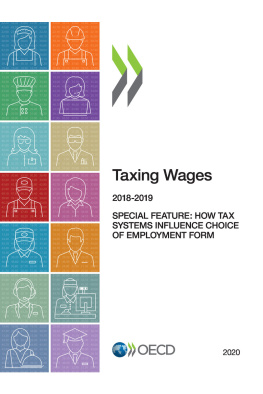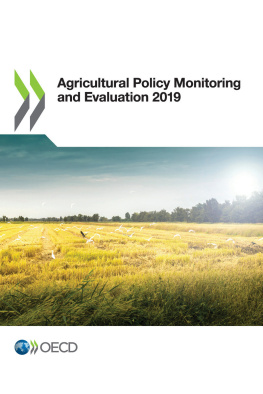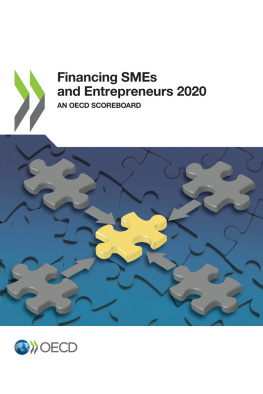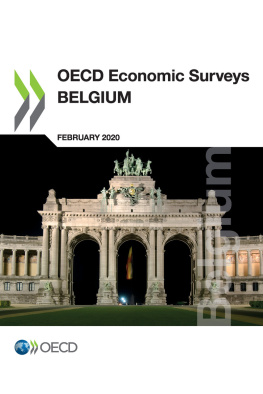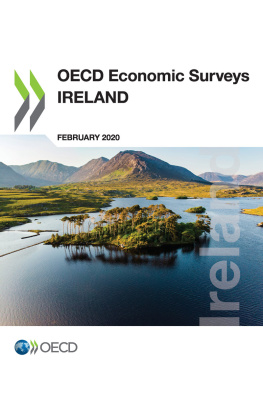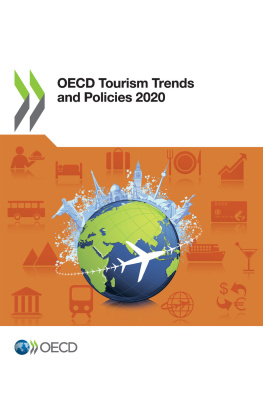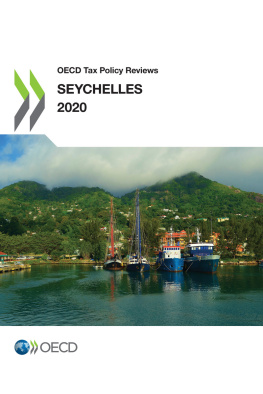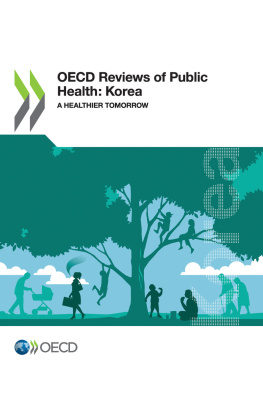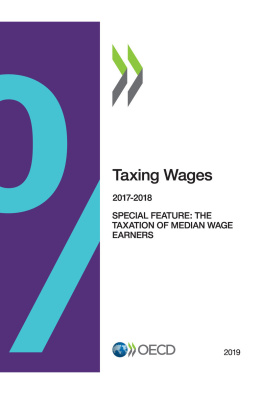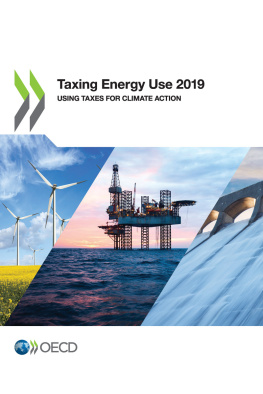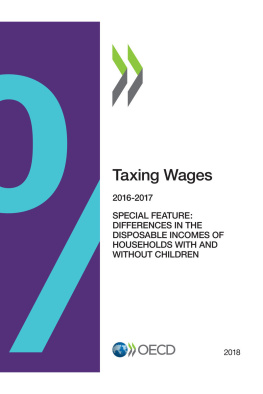OECD - Taxing Wages 2020
Here you can read online OECD - Taxing Wages 2020 full text of the book (entire story) in english for free. Download pdf and epub, get meaning, cover and reviews about this ebook. year: 2020, publisher: OECD Publishing, genre: Politics. Description of the work, (preface) as well as reviews are available. Best literature library LitArk.com created for fans of good reading and offers a wide selection of genres:
Romance novel
Science fiction
Adventure
Detective
Science
History
Home and family
Prose
Art
Politics
Computer
Non-fiction
Religion
Business
Children
Humor
Choose a favorite category and find really read worthwhile books. Enjoy immersion in the world of imagination, feel the emotions of the characters or learn something new for yourself, make an fascinating discovery.
Taxing Wages 2020: summary, description and annotation
We offer to read an annotation, description, summary or preface (depends on what the author of the book "Taxing Wages 2020" wrote himself). If you haven't found the necessary information about the book — write in the comments, we will try to find it.
OECD: author's other books
Who wrote Taxing Wages 2020? Find out the surname, the name of the author of the book and a list of all author's works by series.
Taxing Wages 2020 — read online for free the complete book (whole text) full work
Below is the text of the book, divided by pages. System saving the place of the last page read, allows you to conveniently read the book "Taxing Wages 2020" online for free, without having to search again every time where you left off. Put a bookmark, and you can go to the page where you finished reading at any time.
Font size:
Interval:
Bookmark:
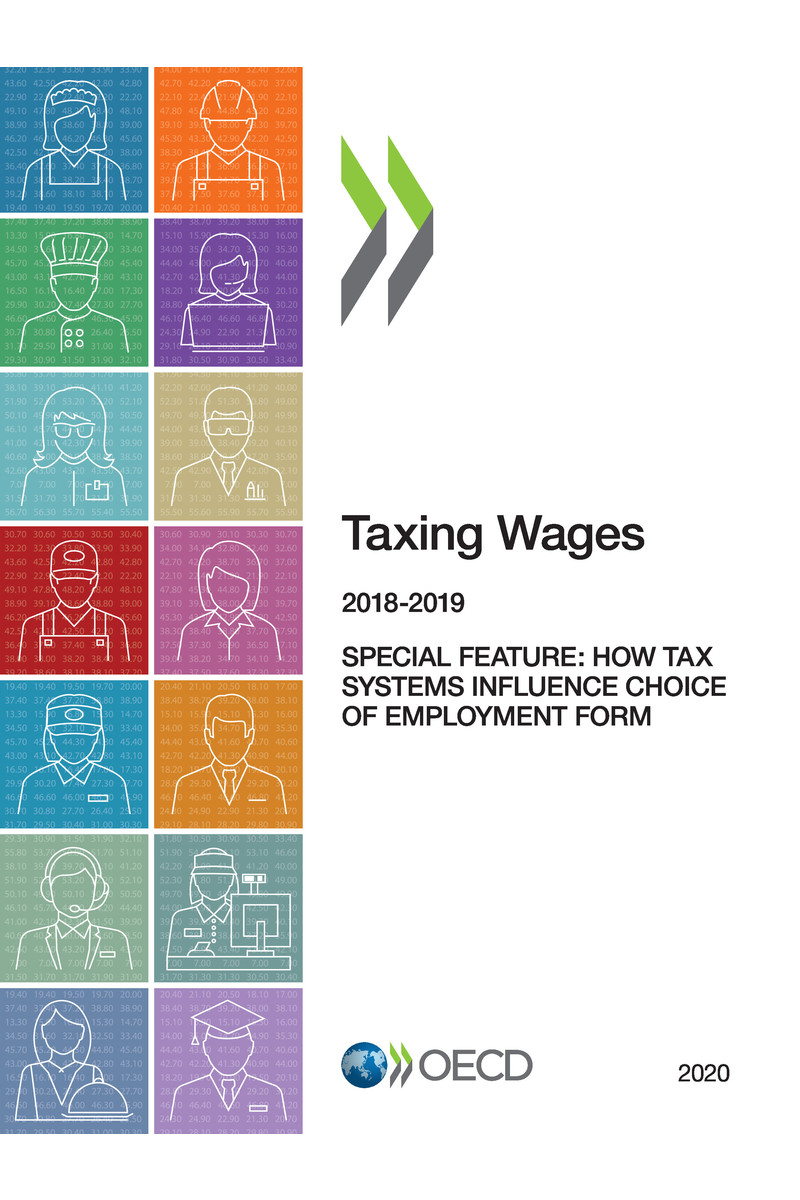
OECD (2020), Taxing Wages 2020 , OECD Publishing, Paris, https://doi.org/10.1787/047072cd-en .
This annual publication, Taxing Wages , The information contained in the Report covers the personal income tax and social security contributions paid by employees, the social security contributions and payroll taxes paid by their employers and cash benefits received by families. The objective of the Report is to illustrate how personal income taxes, social security contributions and payroll taxes are calculated and to examine how these levies and cash family benefits impact on net household incomes. The results also allow quantitative cross-country comparisons of labour cost levels and of the overall tax and benefit position of single persons and families.
The Report shows the amounts of taxes, social security contributions, payroll taxes and cash benefits for eight household types, which differ by income level and household composition. It also presents the resulting average and marginal tax rates. Average tax rates show that part of gross wage earnings or total labour costs which are taken in personal income taxes (before and after cash benefits), social security contributions and payroll taxes. Marginal tax rates show the part of an increase of gross earnings or total labour costs that is paid in these levies.
The focus of the Report is the presentation of new data on the tax/benefit position of employees in 2019. In addition, the new data is compared with corresponding data for the year 2018. The average worker is designated as a full-time employee (including manual and non-manual) in either industry sectors B-N inclusive with reference to the International Standard Industrial Classification of All Economic Activities, Revision 4 (ISIC Rev.4) or industry sectors C-K inclusive with reference to the International Standard Industrial Classification of All Economic Activities, Revision 3 (ISIC Rev.3).
The Report is structured as follows:
Part I (Tax burden comparisons and trends) includes 6 chapters:
Chapter 1 contains an overview of the main results for 2019.
Chapter 2 contains the Special Feature on How Tax Systems Influence Choice of Employment Form.
Chapter 3 reviews the main results for 2019, which are summarised in comparative tables and figures included at the end of that section.
Chapter 4 presents a graphical exposition of the estimated tax burden on labour income in 2019 for gross wage earnings between 50% and 250% of the average wage.
Chapter 5 reviews the main results for 2018, which are summarised in the comparative tables at the end of the chapter and compares them with the 2019 figures.
Chapter 6 focuses on the historical trends in the tax burden for the period 2000-2019.
Part II contains individual country tables specifying the wage levels considered and the associated tax burdens for eight separate household types, together with descriptions of each tax/benefit system.
The Annex describes the methodology and its limitations.
The Report has been prepared by the OECDs Centre for Tax Policy and Administration (CTPA) under the auspices of the Working Party No.2 on Tax Policy Analysis and Tax Statistics (WP2) of the Committee on Fiscal Affairs. The Report was led by Dominique Paturot under the supervision of Michelle Harding, Head of the Tax Data and Statistical Analysis Unit and written jointly with Anna Milanez who authored the Special Feature. The authors would also like to acknowledge Michael Sharratt for the data management and dissemination and Marie-Aurlie Elkurd for the publication formatting as well as other colleagues in CTPA: Leonie Beisemann, David Bradbury, Bert Brys, Karena Garnier, Natalie Lagorce, Pascal Saint-Amans, Hannah Simon and Carrie Tyler for their support and valuable comments. The authors would like to thank the delegates of Working Party No.2 on Tax Policy Analysis and Tax Statistics and the Committee on Fiscal Affairs for their inputs. This document has been produced with the financial assistance of the European Union. The views expressed herein can in no way be taken to reflect the official opinion of the European Union.
Earlier editions were published under the title The Tax/Benefit Position of Employees (19961998 editions) and The Tax/Benefit Position of Production Workers (editions published before 1996).
On 25 May 2018, the OECD Council invited Colombia to become a Member. At the time of publication, the deposit of Colombias instrument of accession to the OECD Convention was pending and therefore Colombia does not appear in the list of OECD Members and is not included in the OECD zone aggregates.
In 2019 the OECD average tax wedge for the single worker earning the average wage was 36.0%, a decrease of 0.11 percentage points from 2018 and the sixth consecutive annual decrease. The tax wedge measures the difference between the labour costs to the employer and the corresponding net take-home pay of the employee. It is calculated as the sum of the total personal income tax (PIT) and social security contributions (SSCs) paid by employees and employers, minus cash benefits received, as a proportion of the total labour costs for employers.
The OECD average tax wedge decreased for the single worker in 2019, although the tax burden decreased in only 17 out of the 36 OECD countries. Across the board, with the exception of Lithuania, the decreases in the tax wedge were small at less than one percentage point. The largest decrease was in Lithuania (3.43 percentage points), where the implementation of a major policy reform involved a significant reduction in employer SSCs, with most of this reduction being replaced with an increase in the tax burden of employees and a corresponding increase in their gross wages.
Font size:
Interval:
Bookmark:
Similar books «Taxing Wages 2020»
Look at similar books to Taxing Wages 2020. We have selected literature similar in name and meaning in the hope of providing readers with more options to find new, interesting, not yet read works.
Discussion, reviews of the book Taxing Wages 2020 and just readers' own opinions. Leave your comments, write what you think about the work, its meaning or the main characters. Specify what exactly you liked and what you didn't like, and why you think so.

